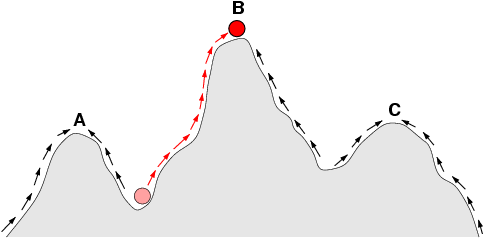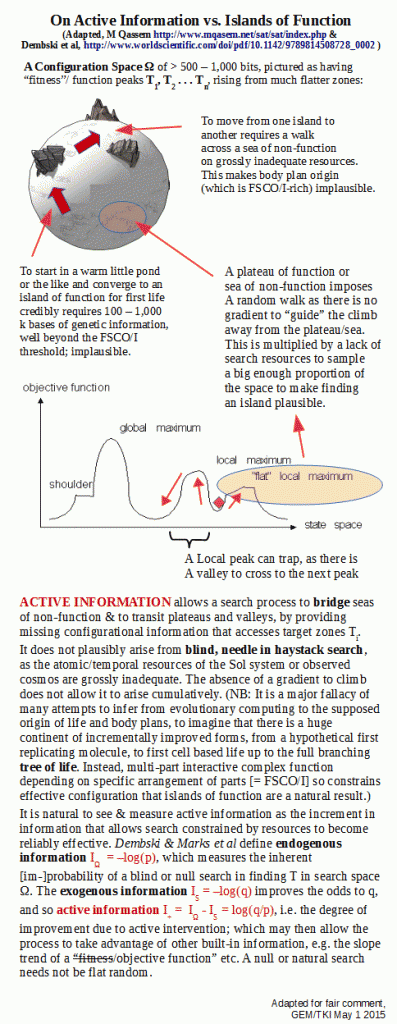We have been using a 3-D printer-constructor formalism, and now we can use it to see how hill climbing leads to local trapping.
Again, the core formalism:

Now, let us modify by allowing some sort of local random mutation to d(E) case by case within an n-run, now seen as a generation, so E1 to En are all incrementally different, and in effect are a ring around E in a fitness landscape. From this, we can see a survival filter that on average selects for superior performance. This leads, naturally to hill-climbing, perhaps even to several related peaks in a chain on an island of function. But now, we see:

Here, we see that hill climbing leads to peak trapping, as at A B or C, any change trend is downhill. Ruggedness of a fitness landscape counts, and not for the notion that hill climbing explains evolutionary advance.
No, it gets more complicated, once we realise that complex, information rich functionally specific organisation is a fine tuning phenomenon. That is, we now have the challenge of island hopping across seas of non function:

So, absent injection of active information . . . contrivance . . . there is a “natural, blind, needle in haystack search”challenge to create novel body plans. Where, if “natural selection” is acceptable, plainly so is “natural . . . search.”
This of course feeds back to getting TO the beaches of an island of function. So, we have the natural search problem in focus, once FSCO/I and fine tuned organisation are recognised.
For this, there has been much distraction and dismissiveness over the years [often, pretending hyperskeptically that FSCO/I is ill conceived], but no cogent answer, nor is there any good reason to believe in a vast continent of incrementally accessible functional forms from a last universal unicellular common ancestral form, traversing the tree of life believed to be ancestrally formed. Indeed, this brings to the surface the systematic pattern of gaps, sudden appearances and disappearances that are the trade secret of paleontology.
So, local trapping and need to arrive at shorelines of function by blind “natural . . . search” are significant challenges. Where, intentional injection of active information by intelligently directed configuration, absent ideological imposition, is a very good explanation for, say, the subtleties of a Dragonfly’s wing, including up to 25% speed improvement from flutter-reducing stigma on the leading edge of the wing . . . as obvious a case of subtle fine tuning as one may wish for:

And, so forth. END